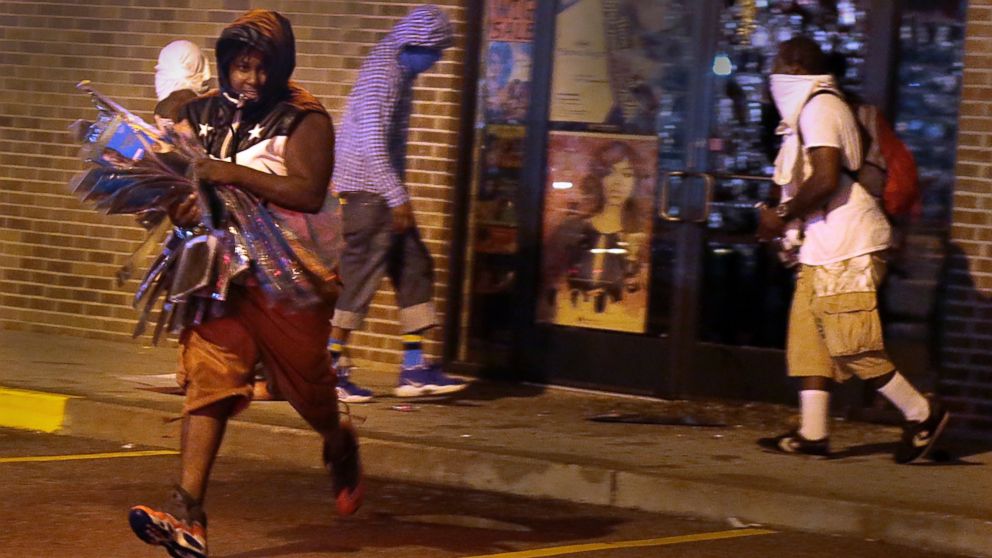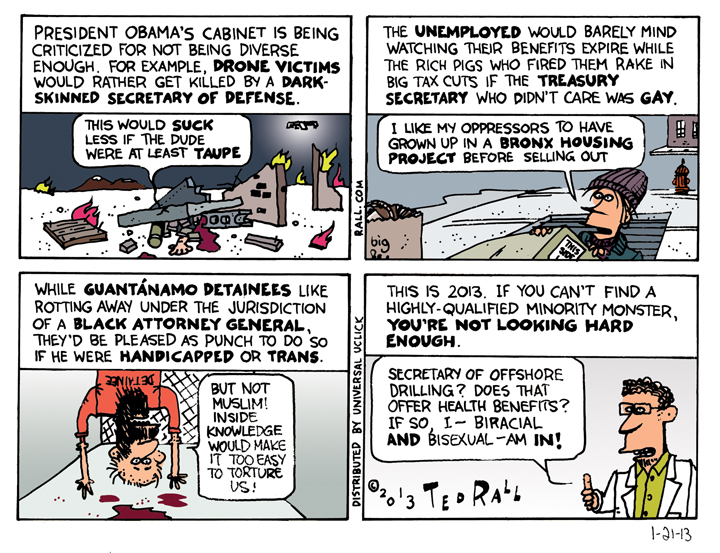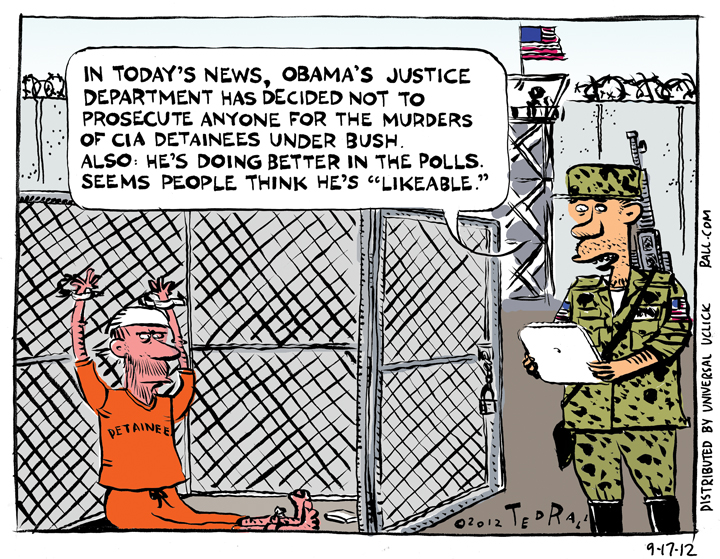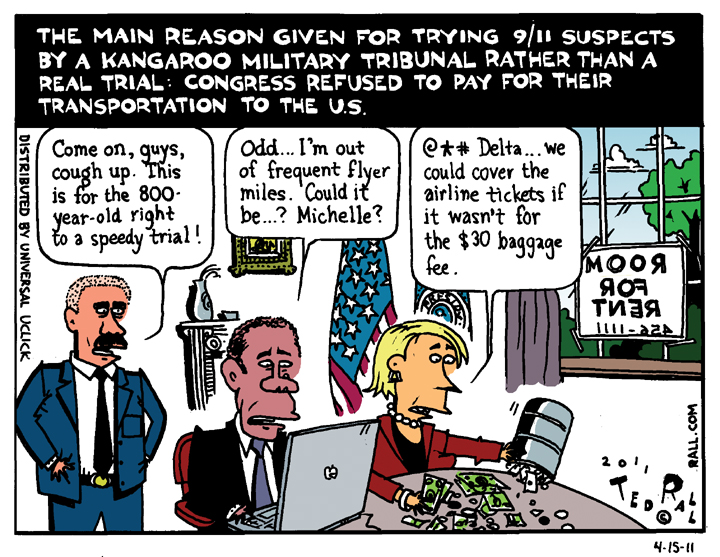
If I were Trump, I’d fire Robert Mueller.
If I were advising Trump, I’d tell him he should fire Mueller.
I know: this directly contradicts conventional wisdom. Which is fine. If I’ve learned anything from this life, it’s that if you don’t have a clue about anything, do exactly the opposite of what the crowd does and you’ll come out ahead in the end.
If you follow the pseudo-liberal opinion writers at corporate media outlets who dictate conventional wisdom in American electoral political commentary, you know that the one thing that they are confident the president wouldn’t dare do is fire the former FBI director/special counsel.
Trump may be enough of a wild card to describe neo-Nazis as very fine people.
Trump might use his Twitter account to provoke a nuclear war with North Korea.
But fire Mueller? That would be crossing a very russet line.
At this writing, Trump says he has no plan to can the investigator. But that official White House line comes straight out of the CEO propaganda playbook: “has no plan” (present tense) isn’t the same thing as “will not decide to” (future tense). Future tense might be never, might be next week, might be tomorrow morning. The one thing we can all be sure of is that very few things would make Trump happier than ridding himself of this particular meddlesome priest.
The self-declared Democratic “Resistance” to Trump is warning that playing the Archibald Cox card would take the president and his administration a bridge too far, past his Rubicon, beyond the Pale, into unchartered territory that would provoke so much rage that it would mark the beginning of the end of his unlikely reign.
“ABSOLUTE RED LINE: the firing of Bob Mueller or crippling the special counsel’s office. If removed or meaningfully tampered with, there must be mass, popular, peaceful support of both. The American people must be seen and heard – they will ultimately be determinative,” tweeted Obama attorney general Eric Holder.
Bullshit.
First let’s remember what happened to Nixon in the aftermath of the Saturday Night Massacre. Cox complained, the media freaked out, Congress was outraged, and for the first time since the Watergate break-in a plurality of Americans told pollsters they favored impeachment. But Nixon survived another year, and no student of history believes the outcome would have been much different had he not fired Cox. Firing Cox turned out to be just one of a series of drip-drip-drip outrages that ultimately led to the president’s resignation.
Besides, there’s a huge difference between that Republican president and this Republican president. In 1973, Democrats controlled both the House and the Senate. Now it’s the opposite.
Look, I think it’s really cute that Eric Holder (who, if I could get past his failure to resign over Obama’s refusal to close Guantánamo, I might kinda respect) thinks the streets are going to fill up with angry mobs if and when Trump dumps Mueller. But here’s a reality check for his ABSOLUTE RED LINE: there was an actual radical left in 1973, the antiwar movement was a serious force in politics, both houses of Congress were controlled by Democrats, yet the only thing affected by getting rid of Archibald Cox was the size of the next morning’s newspaper headlines. If no one protested then, you can be damn sure no one will take a day off work to attend a Mueller-themed Day of Rage.
Never mind Holder’s fantasies. There is no Resistance.
What there is instead is a lot of self-delusion.
For example, progressive writers point to the Trump Administration’s inability to repeal Obamacare as a key victory attributable to this so-called resistance. Yet Republicans “essentially repealed” the ACA by eliminating the individual mandate in their tax bill — just as Trump is gloating. Anyway, wholesale ACA repeal failed due to John McCain…not the Resistance. Some win.
After the Women’s March on January 21st, there was just one more major street protest against in Trump, a spontaneous uprising at airports that helped slow the implementation of Trump’s anti-Muslim travel ban in February. But that was pretty much it for the Resistance. And on December 4th, the Supreme Court upheld the travel ban. Another defeat.
No protests then.
Actual resistance requires actual organization. It requires actual people getting off their actual butts into the actual streets every actual day and occasionally throwing actual rocks at actual policemen. Revolution isn’t a dinner party and Resistance doesn’t spring up spontaneously like a weed in the crack between two slabs of sidewalk. We don’t have actual organizations ready, willing, or able to organize actual resistance; without those there can only be sporadic, unfocused political tantrums, like the Occupy and anti-WTO protests and the Women’s March, that fizzle out in the face of police brutality or the passage of time. We haven’t even begun to think about what a real resistance movement would look like, much less build one.
That’s why, if I were advising President Trump, I would tell him he has little to nothing to fear by firing that annoying special counsel.
Nothing would happen.
Post-Mueller, people would simply shrug their shoulders and go to work. Maybe there’d be a march — but only one march. Not two. And it would be 100% guaranteed peaceful — and thus 0% threat to the powers that be.
And the president and his corrupt cronies could go back to the nation’s their business: lining their own pockets.
Tell me: why wouldn’t Trump fire Mueller?
(Ted Rall’s (Twitter: @tedrall) brand-new book is “Meet the Deplorables: Infiltrating Trump America,” co-written with Harmon Leon. His next book will be “Francis: The People’s Pope,” the latest in his series of graphic novel-format biographies. Publication date is March 13, 2018. You can support Ted’s hard-hitting political cartoons and columns and see his work first by sponsoring his work on Patreon.)





